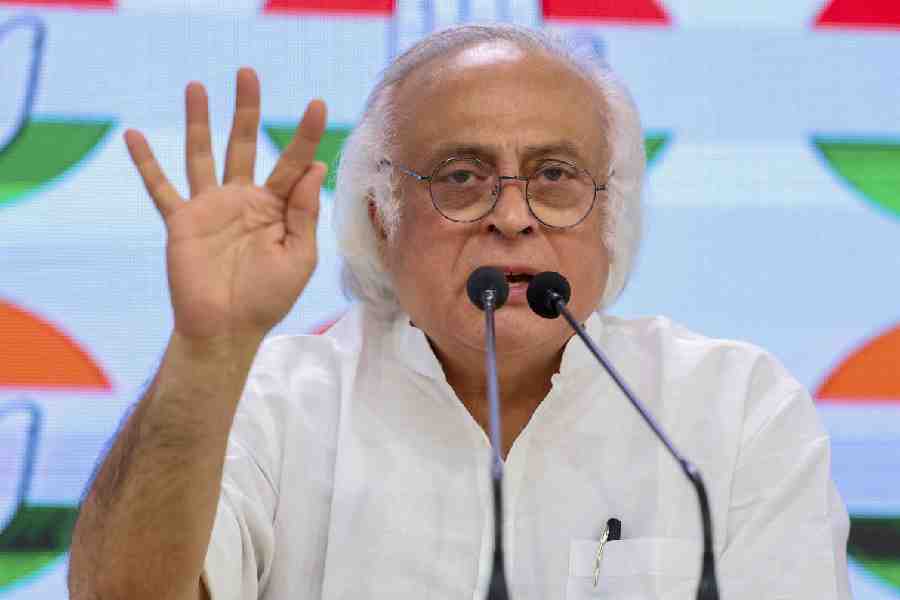
It's not often that one can, with total conviction, assert there won't be another Mr X or Ms Y. Saying that of Virender Sehwag comes easy, though.
Rolls off the tongue, for there will never be another Viru.
Because nobody has the hand-eye coordination Sehwag possessed during his peak years... Because nobody has the ability he had to dismantle the finest of attacks with such contempt.
Also, nobody has it in him to set the exceptional pace at which Sehwag scored, giving that much more time for bowlers to try and build on the platform set by him.
That was a huge quality, a bonus for any captain.
Sehwag epitomised what playing one's natural game meant. Like Matthew Hayden, he changed the dynamics of opening in Test cricket.
The bowlers began to fear the Sehwags and the Haydens, not the other way around. Indeed, convention turned on its head.
What's significant is that Sehwag wasn't an opener to begin with, yet took to the most challenging position without batting an eyelid.
Confidence, for you.
"I live ball-to-ball... I don't plan," Sehwag told me, in an interview for The Telegraph, in Islamabad (in 2004), not many weeks after his history-creating 309 in Multan. An innings which put India on the path to a jumbo victory over Pakistan.
Sehwag didn't deviate from his 'ball-to-ball' mantra. That was in evidence even last year, in the IPL, when he smashed the Chennai Super Kings bowlers for an outrageous 122 off 58 balls.
That brutal was the innings.
An entertainer at heart, it's not that Sehwag played only for the galleries. He was aware of the importance of the ticket-buying public, but his cricket wasn't dictated by their needs.
It's a shame, really, that Sehwag retired from international cricket as somebody who hadn't been picked for the country for over two-and-a-half years... As one who'd been totally forgotten by the Establishment.
Surely, a key player across formats for much of the first decade of this century, deserved better.
Never bound by protocol and by the need to be politically correct - Sehwag once whispered "Main logon ko salaam to nahin karnewala" - he announced his retirement on Twitter.
Sehwag did it his own way.
The announcement came on the day Sehwag turned 37, on Tuesday, confirming what he'd said, in a one-on-one a decade ago.
Asked by this newspaper if he had a goal, Sehwag replied: "To play for as long as possible. Perhaps, till the age of 36-37... I'll quit the day I lose motivation, the day my hunger gets less."
Prophetic.... The interview appeared on March 17, 2005.
Of course, Sehwag intends completing his 2015-16 first-class commitments with Haryana, after snubbing the poorly-run Delhi & District Cricket Association.
Two days after the announcement, Sehwag helped himself to 136, boosting Haryana's cause against Ranji Trophy champions Karnataka.
It's tough slotting Sehwag into a stereotype.
Sehwag finished with an enviable average of 49.34 in Tests and a fine 35.05 in ODIs, yet was never driven by statistics, never too conscious on approaching a landmark.
If anything, Sehwag didn't bat for records. Just like he never cared to look at the wicket in the days leading up to a face-off.
As for Sehwag's explanation for the last bit: "I don't wish to start with a preconceived notion... Having preconceived notions isn't my idea of batting."
Why argue with somebody who backed himself to the hilt?
Right through Sehwag's career, questions were raised about his technique. Not that he lost sleep or spent hours shadow batting to rectify something commented upon with increasing regularity.
Sehwag's take, during the course of the one-on-one in Islamabad: " Mere hisab se my technique is perfect and I'm not bothered about what others have to say... I haven't changed my style, which is treating every ball on merit."
Many may remember Sehwag the most for being India's first triple centurion (and the only one with two 300-plus scores) in Test cricket, but two great innings aren't talked about much.
The first was a stunning 195 at the MCG on Day I of the 2003-04 Boxing Day Test. The other was a truly brilliant 293 at the Brabourne, in 2009-10, against Sri Lanka - the match where India became No.1 in Test cricket.
Sehwag's contribution in that climb to the pinnacle has never been acknowledged in the manner it ought to have been.
Today, India's No.5 in Test cricket.
Besides, under pressure, Sehwag had a memorable 105 on Test debut (Bloemfontein) and surprised quite a few with a remarkable 201 in Galle, almost seven years later, in 2008, an innings where he carried his bat through.
Few would have bet on that.
That 14 of Sehwag's 23 Test hundreds were scores of 150 and more speaks volumes of his class and appetite. He believed in Big Hundreds or, as Graham Gooch would put it, "daddy hundreds."
It's somewhat odd that Sehwag didn't leave as prominent a stamp in limited overs cricket. He was, however, in the India squad which won the inaugural World T20, in 2007, and featured in the World Cup-winning XI in 2011.
Sehwag had to wait for over two-and-a-half years after his ODI debut to earn his first Test cap and, despite being a centurion on debut, at No.6, he responded to a call from Sourav Ganguly and John Wright to open during the Test series in England, in 2002.
Well, Sehwag didn't quite look back after that. As for the bowlers, they didn't know where to look. Nor, their captains.
As with Zaheer Khan, who retired less than a week before Sehwag, some of the latter's best cricket was under the captaincy of Sourav and when Wright was the India coach.
Again, like Zaheer, Sehwag rediscovered form during Gary Kirsten's tenure as coach.
The slump began after the 2011 World Cup, when Mahendra Singh Dhoni grew in stature as the India captain across formats and Duncan Fletcher took Kirsten's chair.
Whatever the reasons, Sehwag didn't feel comfortable with Fletcher around. The script had been much the same when Greg Chappell was the India coach.
It's possible that Sehwag's "attitude" had something to do with the two phases. But, then, he had a mind all his own. On the field and, certainly, off it.
Some individuals require more space than the rest to operate in their preferred zone of comfort. Yet, in a team sport, the environment around the group counts for the most.
You do need two hands to clap, though.
With the passage of time, Sehwag will probably give his side of the story.
Sehwag remains indebted to two India captains - Sourav and Anil Kumble. Had the latter not persuaded the selectors to include him on the 2007-08 tour of Australia, his career would have ended years ago.
Some months later, I recall asking Kumble why he'd made such a strong pitch for Sehwag. His answer: "He's a match-winner... On his day, Sehwag can win it for you single-handedly... Also, such is his style, that once he gets going, the opposition's morale goes down very quickly."
During the course of that interview, Kumble added: "Sehwag looks to score, not survive... He may initially take the survival route in order to score big... That would be a means to an end... I'd pull a hamstring and not bowl to Sehwag."
Coming from the third most successful bowler in Test cricket, that was a massive compliment.
"If cricket has a God, it's Sachin (Tendulkar)," is remembered as one of the more memorable quotes from Sehwag.
Understandably, Sehwag's idol/role model, spoke very highly of him: "Leaves his signature on the game with his tremendous achievements... Loved his instinctive approach to batting and life."
Sachin, the No.1 record-smasher, summed it up beautifully.










